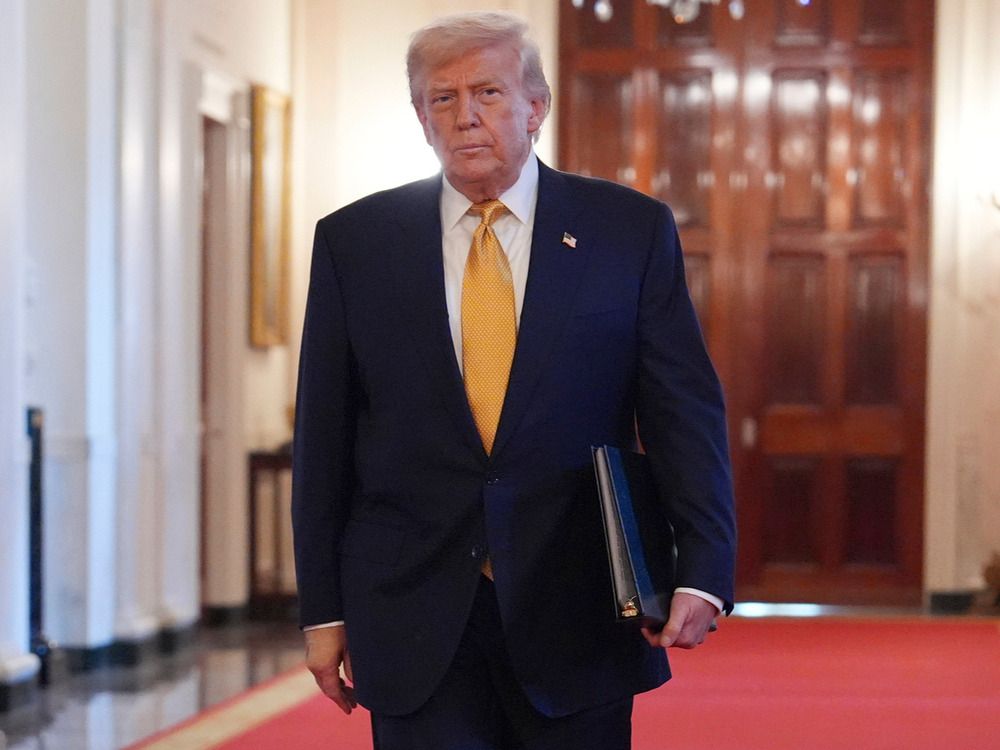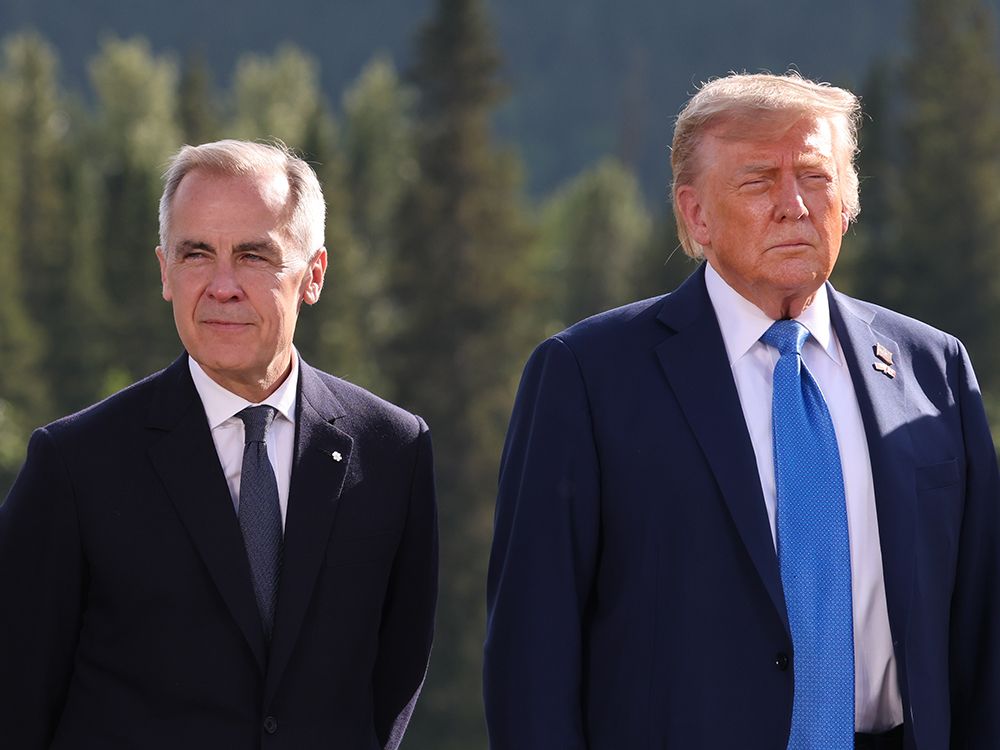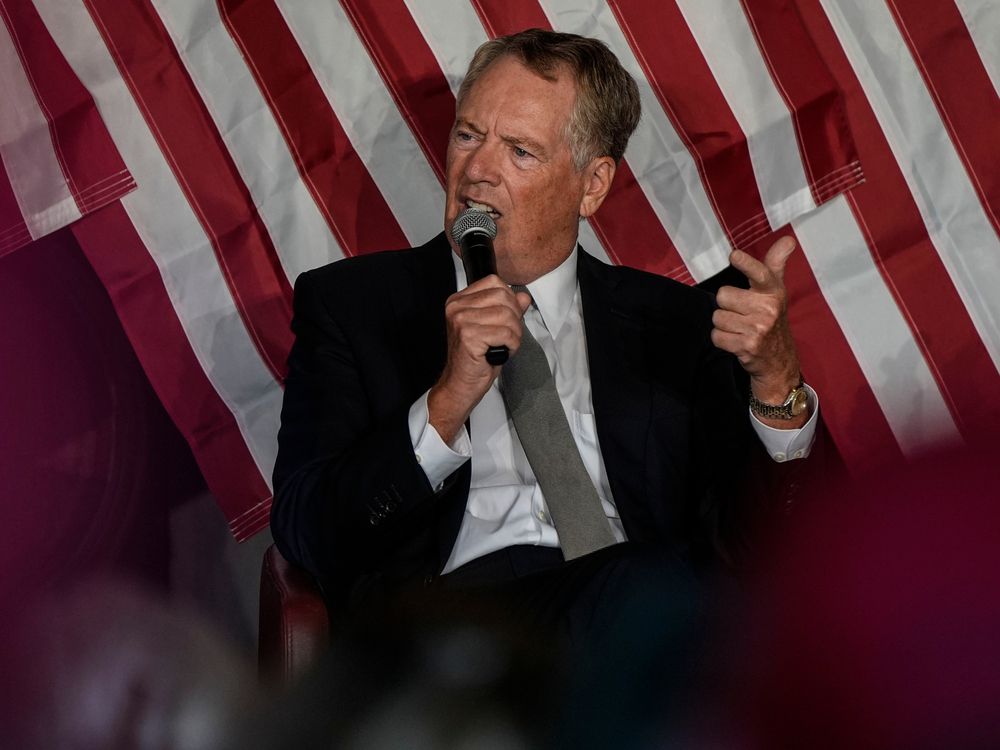
Trade talks are reportedly continuing between Canada and the U.S., with formal meetings having taken place since U.S. President Donald Trump revealed more threats and demands last week, a source close to the White House said.
Prime Minister Mark Carney said Tuesday that he expected U.S. tariffs would likely be part of any future deal. “There is not much evidence at the moment — from the deals, agreements and negotiations with the Americans, for any country or any jurisdiction — to get a deal without tariffs,” Carney said. He also said he expected trade talks to “intensify” in the next few weeks.
Washington and Ottawa have been engaged in tempestuous trade talks for months. Carney’s team is desperate to end tariffs imposed by Trump on Canadian steel and aluminum exports and keep tariff exemptions for goods covered by the U.S.-Canada-Mexico trade deal (USMCA).

After Carney’s election in April, things appeared to be going well for awhile: Carney visited the White House, he seemingly got Trump to drop his talk of making Canada a “51st state,” and the prime minister quickly gave in when the president threatened to end talks if Canada didn’t scrap its digital services tax (DST) on U.S. tech firms. Carney also pledged last month to increase defence expenditures dramatically to meet a higher NATO spending target by 2035, a priority of Trump’s. It looked like negotiations could lead to a new U.S.-Canada deal before the July 21 deadline the two of them had set for themselves.
Then came the letter.
Trump wrote an open letter to the prime minister last week, threatening to impose 35 per cent tariffs on Canadian goods starting Aug. 1, vaguely citing as reasons Ottawa’s trade deficit, counter tariffs, dairy trade restrictions, and failure to halt fentanyl from crossing the border. What Trump didn’t do — as he had done with the DST — was outline exactly what Carney needed to do to get things back on track.
National Post looks at the reasons Trump might have wanted to derail the negotiations — and what other surprises the White House might have in store.
Trump is under pressure
Trump “likes to keep us in suspense,” says Andrew Hale, a senior policy analyst at Heritage Foundation. But there is a timing issue at play here that goes beyond the negotiations. “Basically, they have a window of time to use these ‘Liberation Day’ tariffs,” he says, referring to Trump’s sweeping new international tariff regime unveiled in April. Hale said there is significant legal pushback facing the administration’s use of the International Emergency Economic Powers Act (IEEPA) that ostensibly gives the president power to circumvent Congress to impose tariffs in urgent situations.
So far, there have been a few court rulings against Trump’s use of IEEPA tariffs. Oral arguments in the U.S. Court of Appeals are scheduled to begin for one of those rulings on July 31, with another court set to hear two other tariff-related cases in September.
To use IEEPA, a genuine emergency needs to be declared. What Trump did was declare emergencies based on trade deficits, drug trafficking, and immigration. Well, “we’ve been running trade deficits for decades,” says Hale. U.S. j
udges have ruled that there is no direct connection between the national emergency declared over fentanyl and illegal migration.
The court rulings could still go either way. “(Trump’s team is) concerned that they will no longer be able to weaponize these (tariffs) in trade negotiations,” Hale adds.
“By simply heaping on the pressure and saying, ‘Bam, you get these tariffs, you’re getting increased tariffs and the rest of it,’ they’re trying to get as many concessions as possible whilst they can still use them.”
If Trump’s emergency tariffs lose in court, he’d be left with the less-powerful weapon to restrict imports deemed a national security threat, under Section 232 of the Trade Expansion Act.
“I do know that Plan B is to use the 232 tariffs as an alternative more aggressively,” Hale said. But he notes that they are product-specific and do not allow for across-the-board tariffs.
Tori Smith, a senior vice president at Forbes Tate Partners, a government-relations consultancy in Washington, points out that Trump’s Aug. 1 deadline doesn’t seem random given the appeal hearing against emergency tariffs set to start on July 31.
She also notes that the review scheduled of the USMCA, as part of its original terms, begins in October. Trump’s letter, Smith said, was probably meant to “create leverage for the United States in advance of the USMCA review.”
Smith said the “long-game strategy” for the White House is to put it in the “strongest position for (the USMCA) negotiations.”
White House revenge
There may also be something more personal going on, according to a source close to the administration, who spoke on condition of anonymity.
The NAFTA negotiations in Trump’s first term that led to the USMCA were headed by United States Trade Representative (USTR) Ambassador Robert Lighthizer, who had a cordial relationship with Canada’s
then-foreign affairs
minister Chrystia Freeland.
In the process, Lighthizer reportedly neutralized Peter Navarro, then director of the
Office of Trade and Manufacturing Policy
, a fierce protectionist and Trump loyalist, who is now a senior adviser to the president on trade.
“He’s never really forgiven Lighthizer for that,” the source said. (Lighthizer has since returned to private life.)

While the USMCA was once touted by U.S. officials as the “gold standard” of trade deals, possibly the reason the administration has talked of ripping it up “was because Navarro sees that as Lighthizer’s golden legacy, and he has reasons … personal bitterness, to rip it up.”
David Boling, a former deputy assistant USTR for Japan, said he never witnessed the two men in meetings together and couldn’t comment on their working relationship. But they had very different styles, he recalled.
“Lighthizer skillfully renegotiated NAFTA by building up trust with Capitol Hill Democrats. Coalition-building, however, is not Navarro’s strong suit,” said Boling, who now works at the political-risk consultancy Eurasia Group.
Navarro recently said he didn’t like negotiating with Canada, while Mexico’s negotiators were a “pure joy to deal with.”
“You know, they (Mexicans) were tough negotiators, but they were reasonable, fair negotiators. The Canadians were very, very difficult, and they’ve always been very difficult,” he
said in a television interview last week
.
Little downside for Trump
It seems that the more Trump has pushed for concessions from Canada — on defence, on digital taxes, on fentanyl crackdowns — the more he’s been able to get.
Sources say his senior economic team feels they have to sell the president on deal structures, but that Trump often feels he can press for more.
“I think that this can be demonstrated pretty obviously by the Vietnam announcement,” says Smith, noting how Vietnam’s team thought they would be getting a lower tariff rate than 20 per cent, but then Trump “put out a different rate than had been negotiated or talked about by his team.”
Trump mentioned Canada’s highly restricted market for dairy in his open letter to Carney. But he might also start pushing for Canada to commit to more things beyond trade, as he has with fentanyl and defence.
“The Trump administration has also leveraged tariffs in matters that go well beyond trade policy with a number of countries,” said Hale. In March, the president warned countries buying Venezuelan oil they would be punished with tariffs on all U.S. exports; in the last two weeks, he’s threatened “severe tariffs” on Russia if it didn’t make peace with Ukraine, and tariffs on BRICS-aligned countries (meaning Brazil, Russia, India, China, and South Africa as well as Iran and Indonesia) because he said they wanted to undermine the U.S. dollar.

So he may want to wield economic pressure to try getting Carney to commit to helping restart a new Canada-U.S. oil pipeline after Keystone XL was killed by the last American president, the source close to the White House said. “They want the Keystone XL pipeline big time,” the source said.
Trump has never stopped wanting that pipeline since he approved it in his first term, and has raised it repeatedly since his re-election, noted Diana Furchtgott-Roth, director of the Center for Energy, Climate, and Environment at the Heritage Foundation.
“Everybody knows that Prime Minister Carney has a focus on the environment, rather than fossil fuel production, so I imagine that it might be a sticking point,” she added. So would the fact that, right now, there is no company proposing that project, since the former proponent, TC Energy, abandoned it.
Apparently, the White House also wants Carney to loosen up on Liberal social objectives, like ESG (environment, social and governance) and DEI (diversity, equity and inclusion), that have in recent years complicated regulation in Canada, including for American companies that do business here. Trump has been aggressive about deregulating away from social and climate rules in the U.S. since he took office.
But Carney is “religious” about ESG, said the Washington source, which could be a “real barrier to these things getting forward.” Yet, if Carney got rid of net-zero targets and environmental impediments, “I think there’d be a massive love-in,” the source added.
How many of these new lines of negotiation — dairy, defence, oil, DEI, ESG or others — the president opens is anyone’s guess, but what is almost certain is that current trade wrangling will bleed into October’s USMCA review and well into 2026, said Smith.
“The next year is going to continue to be very uncertain and rocky for Canada,” she said.
National Post
tmoran@postmedia.com
Our website is the place for the latest breaking news, exclusive scoops, longreads and provocative commentary. Please bookmark nationalpost.com and sign up for our politics newsletter, First Reading, here.
